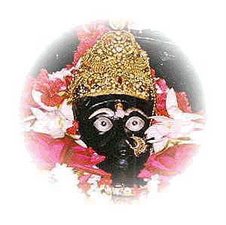By Parshuram Rai
08 October, 2007
Countercurrents. org
" More than 340 million of Indians still go to bed without food every night .Over 10,000 Indians die of hunger every day and about 40 lakh every year. In other words, every 18 months we are inflicting an "invisible genocide" of Nazi scale on our poor and hungry compatriots."
More than 24,000 people die of hunger every day, nearly 78 % of them women and children. More than 1.4 billion people in the world face chronic hunger and over 13 million die of hunger every year. They die of hunger not because world does not have enough food for the entire population of the world, but because of an insensitive and callous world where profit of market seems to be the final arbiter of human destiny.
The number of people who fell prey to Hitler's insanity was 6 million and the "silent holocaust of hunger" is killing over 13 million people every year. Every year more than two genocides of Nazi scale. But unlike the victims of Nazi gas chambers, the victims of hunger die unnoticed, unmourned and in the backyards of vibrant democracies. If we believe in Gandhian dictum that poverty is the worst form of violence, then we are still inflicting this violence on over 1.4 billion poorest people of the world.
While the U S can spend over $ 80 billion per year in Iraq alone, the entire wealth and generosity of the world can not generate just 13 billion dollors which is the only amount required to prevent the "invisible genocide by hunger".
More than 340 million of Indians still go to bed without food every night .Over 10,000 Indians die of hunger every day and about 40 lakh every year. In other words, every 18 months we are inflicting an "invisible genocide" of Nazi scale on our poor and hungry compatriots. Every third hungry person in the world is an Indian and every third Indian goes to bed without food. The number of hungry people in India is always more than the number of people below official poverty line.
While around 37% of rural households were below the poverty line in 1993-94, 80% of households suffered undernutrition. Evidence on the consumption of food, on calorie-intake and on nutritional outcomes clearly prove that chronic hunger persists on a mass scale in India . Shall we still call it hunger deaths or " invisible genocide" of poor Indians ?
This scale of hunger and abject poverty is unconscionable in a fast growing economy with rising number of dollor millionaires. What are the main reasons behind this dehumanizing level of poverty? After 15 years of my research and activism on the issue of hunger and poverty , I find the traditional explanation of poverty in terms of income poverty and poor economy becoming increasingly irrelevant . I find it difficult to disagree with Lord Meghnath Desai when he says that economic poverty in India in inextricably linked to the poverty of politics( read bad governance and corruption ).
I have done some back of the envelope calculations about the amount of money required to prevent any Indian going to bed without food .The required amount is not huge. In fact, no Indian should go to bed without food even at the current level of budgetary allocations made under heads of various anti-poverty programmes , if we could just ensure the leakage-proof delivery of the allocated funds to their targeted population.
There are currently four major schemes in operation that essentially aim at fighting hunger and food insecurity; namely,PDS(public distribution system),ICDS (integrated child development scheme), MDM ( mid-day meal scheme) and most importantly NREGS(national rural employment guarantee scheme).There would be very few Indians who would have to skip meals if we could just make these four schemes corruption- free. Therefore, now it is not the poor state of economy or lack of funds that is killing about 40 lakh Indians every year , it is the cancer of corruption that is killing and crippling millions of our compatriots every year. The colonial character of Indian bureaucracy is the single biggest factor behind the epidemic of poverty. The Indian bureaucracy is virtually accountable to none , especially when it comes to the implementation of anti-poverty programmes.
PDS and NREGS are two most important schemes to fight hunger and ensure food security. But , what is the actual performance of these schemes on the ground ? According to a recent report of the Ministry of Consumer Affairs, Food and Public Distribution , "In the last three years, Rs 31, 585.98 crore worth of wheat and rice meant for the poorest of the poor was siphoned off from the public distribution system(PDS). Last year alone, Rs 11,336.98 crore worth of food grain that the government is supposed to distribute to the needy at subsidised prices found its way into the market illegally. Every year, India's poor are cheated out of 53.3% of wheat and 39% of rice meant for them...There is largescale diversion of PDS grain across India… Exceptions apart, the poor in India simply can't trust the government to deliver them food supplies. "(Times of India, Sept. 17, 2007) During last two months, hundreds of poor Adivasis in Rayagada,Koraput and Kalahandi districts of Orissa have died due to "consumption of contaminated water and rotten food" and "hunger and severe food insecurity ".On the basis of my research in 100 villages of Orissa, I firmly believe that it is not the epidemic of cholera but cancer of corruption that is killing hundreds of Adivasis in Orissa's KBK(Kalahandi- Bolangir- Koraput) region.
Cholera is only a symptom and by-product, the root cause is the cancer of corruption which has colonized and crippled all the vital organs of Orissa administration.
Abject poverty and chronic hunger manufactured by corrupt bureaucracy are the main reasons behind these tragic deaths of Adivasis. The PDS(public distribution system) is in a shambles and ICDS(integrated child development scheme) is virtually defunct in the KBK region. The PDS,ICDS and all other anti-poverty programmes have been hijacked and converted into money minting machines for Orissa's sarkari babus.
Most of these Adivasis live a life of semi-starvation which cripples their immune system and their bodies become vulnerable to a host of diseases .In KBK region, for better part of the rainy season, majority of Adivasis have hardly any food to eat and they survive on mango kernel gruel, wild leaves and vegetables. This tragedy repeats every year. The historic anti-poverty programme NREGS(National Rural Employment Guarantee Scheme) was launched to stop precisely this kind of tragedy. Unfortunately, sarkari babus of Orissa have converted even this historic employment guarantee scheme into income guarantee scheme for themselves.
Delhi- based CEFS(Centre for Environment and Food Security) has carried out a survey in 100 villages of Orissa and found that of Rs 733 crore spent under NREGS during 2006-7, over Rs 500 crore has been siphoned off and misappropriated by the government officials of executing agencies.
Moreover, as against the claims of Orissa Government that no needy household in 19 NREGS districts of the state was denied wage employment and each needy household was given an average 57 days of wage employment under NREGS, CEFS study has revealed that large number of needy households were denied not only jobs but even job cards, and not more than 5 days of average wage employment has been given to each needy family in these 19 NREGS districts. We have found that more than 75 per cent of the NREGS funds spent during last year have been siphoned off.
However, we are absolutely certain that there are thousands of villages in Orissa where scale of misappropriation is 80-90 per cent. It is distressing to note that there has been open and participatory loot of NREGS funds in Orissa. We have reasons to believe that the entire state administration is party to this loot.
Is there any linkage between misappropriation of Rs 500 crore of NREGS funds and cholera deaths of hundreds of Adivasis in Orissa? On the surface, the link is tenuous. Scratch a little deeper and the linkage is direct.
To put Rs 500 crore of siphoned NREGS fund in perspective , this amount of money would have given about 90 days of wage employment to about 10 lakh poor families of Orissa. In other words, each of these 10 lakh poorest families would have got Rs 5000 as wages. This amount of Rs 5000 in the context of these poor and hungry families would have given 4-6 months of two subsistence meals or one meal for the whole year. Therefore, it is not just another financial scam , callous bureaucracy of Orissa has robbed 10 lakh hungry families of one meal for the whole year . Who is real killer of Orissa's Adivasis ?
Consumption of contaminated water and rotten food by the people is suspected to have led to the epidemic,(BBC News, August 27, 2007).Life will never be the same for Chintamani Nayak of Naugaon village( Kashipur block). His dream of becoming a father was shattered when his pregnant wife died of diaorrhea. "I lost my pregnant wife because of food scarcity.Now I am helpless", laments Chintamani. Chintamani is one of many villagers grappling with poverty, food scarcity and forced to drink contaminated water….With starvation deaths already on the rise and now this epidemic, the Orissa government has its task cut out.(CNN-IBN ,August 30, 2007)
The Current level of hunger, poverty and deprivation in Orissa's KBK region is as deep, demeaning and dehumanising as ever despite the so- called successful implementation of the NREGS with the highest per capita allocation of funds anywhere in the country. The Rural Employment Scheme has made virtually zero impact on the livelihood security of Orissa's rural poor.
There is no let up in the level of distress migration of Adivasis and Dalits from Orissa's KBK reason in search of livelihood in other parts of the country. On Human Development Index, many of the Sub-Saharan villages would fare better than most of the KBK villages. Hunger and abject poverty are widespread in all the 100 villages of KBK region we visited. Large numbers of children in these villages are suffering from severe malnutrition.
Hunger and abject poverty are apparent and writ large on the hollowed cheeks, sunken eyes and distended bellies of emaciated children. We had also visited Panasguda(Kasipur Gram Panchayat),Gottigud da(Kasipur Gram Panchayat) and Bilamal (Tikari Gram Panchayat) in Kasipur block of Rayagada district
.Many starvation deaths were reported from these three villages during 2001 and the Chief Minister had personally visited these villages to offer relief. Most households in these villages are still living a life of semi-starvation and chronic hunger. For better part of the rainy season they still have to make a choice between starvation or eating mango kernel gruel. Panasgudda and Gottigudda villages have not received even job cards.
Some households have been given job cards in Bilamal but even those households have got only 2-3 days of work under NREGS. The family in Bilamal which had lost 4 members to starvation in 2001 has not received job card as yet. More than 8 persons are reported to have died in Bilamal during last two months. Most of these deaths are essentially hunger-deaths, but it is convenient for bureaucrats to declare them as "cholera deaths."
Where has Orissa Government spent Rs 733 crore of NREGS funds? These hungry Adivasis of Orissa deserve at least an answer in the Platinum Jubille year of India's Independence.
The largest number of cholera deaths have been reported from Kashipur block of Rayagada district. We had surveyed 30 villages of this block and found that there had been proverbial open loot of NREGS funds in all the villages where this job scheme was executed. We had found similar loot of NREGS funds in Laxmipur and Nandpur blocks of Koraput district and Thuamulrampur block of Kalahandi district. All these blocks are now witness to a naked dance of death scripted and choreographed by callous and corrupt bureaucracy of Orissa.
The CEFS survey report was formally released on 17 th August 2007 in New Delhi and all the News Papers of Orissa carried news stories about the shocking findings of this survey, most of them on their front pages. However, the Government of Orissa has maintained studied silence on the damning findings of the CEFS survey.
To neutralize the impact of bad publicity and to deflect public attention from the NREGS Scam ,on 20th August 2007 , the Chief Minister called a high level meeting and ordered survey of NREGS work in the state by Hyderabad-based NIRD( National Institute of Rural Development) . I firmly believe that the objective of the NIRD survey is not to probe the irregularities or misappropriation of Rs 500 crore NREGS funds, but to cover up all this. It is a pure eye wash.
More shocking is the silence of the main opposition party of Orissa - Congress. Except Congress, all other opposition parties have demanded a special session of Orissa Assembly to discuss Rs 500 crore NREGS scam unearthed by CEFS survey . Even the BJP, a partner in the ruling coalition of Orissa, has said on record that there have been serious irregularities and the NREGS in Orissa had miserably failed. It defies all logic as how the main Opposition Party of Orissa (Congress) did not bother to utter a single word about the NREGS scam . It is bizarre to read in the Newspapers that the same Party is now busy counting dead bodies of Orissa's Adivasis. Some one rightly said that we are a country of fire fighters. We begin digging well only after the fire has broken out.
The silence about misappropriation of Rs 500 crore NREGS funds on the part of the oldest political Party of the largest democracy in the world is more shocking to me than Rs 500 crore NREGS scam as such .
Adivasis and Dalits may have first charge on the resources of the country in the speeches of politicians, but in the reality sarkari babus have first charge on them.
The main beneficiaries of all the anti-poverty programmes are self-serving government officials and only left-overs do reach the targeted beneficiaries. Will these poor Adivasis and Dalits ever get freedom from hunger ? It is impossible to achieve freedom from hunger without achieving freedom from corruption.
Only vigilant citizenry can shake up the corrupt bureaucracy by making it accountable for their acts of omission and commision. Unless the public servants are made afraid of being prosecuted, they shall never improve and corruption shall continue to thrive ; and poor adivasis and dalits will continue to die like flies, unnoticed and unmourned by a "rising India".
The author is director of Delhi-based Centre for Environment and Food Security(CEFS) . He can be reached at : http://in.f86.mail.yahoo.com/ym/Compose?To=parshuramray@yahoo.com
Subscribe to:
Post Comments (Atom)







No comments:
Post a Comment